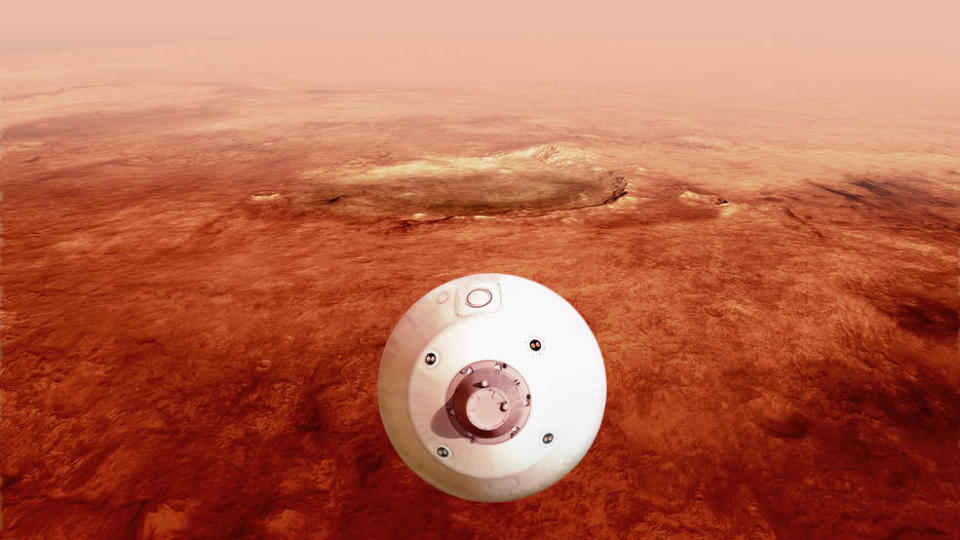Mars landing time: When will Perseverance rover land? How Nasa’s ‘seven minutes of terror’ will play out

Nasa is attempting to drop its Perseverance rover onto Mars, looking for evidence of past life on the Red Planet.
The descent is challenging and not to be understated; of the 19 spacecraft that have attempted to land on the planet, only eight of them have done so successfully.
Making matters even more difficult will be ensuring the rover lands on the specific area that Nasa’s science team wants to study. Rovers have landed in the general vicinity of an area before, but every movement matters.
Weeks and months can be spent just travelling to the correct location, and when exploring an alien planet, time is precious.
“Perseverance is Nasa’s most ambitious Mars rover mission yet, focused scientifically on finding out whether there was ever any life on Mars in the past,” Thomas Zurbuchen, associate administrator for the Science Mission Directorate at Nasa Headquarters, said in a statement.
“To answer this question, the landing team will have its hands full getting us to Jezero Crater – the most challenging Martian terrain ever targeted for a landing.”
The Jezero crater is particularly important because scientists believe that an ancient river flowed into a lake here, and it’s possible that such an area may have preserved signs of life.
Read more: Five things Nasa’s Mars rover is taking to the Red Planet today
The seven minutes it will take for the Rover to descent will play out in this order:
First, the spacecraft that is transporting Perseverance will separate from its entry capsule at 3:38pm EST (8:38pm GMT). Ten minutes later, the craft is expected to hit the top of the Martian atmosphere. It will do this travelling at approximately 12,100 miles per hour.
Almost immediately after, friction from the atmosphere will heat the bottom of the craft to around 1,300 degrees Celsius, before a parachute is deployed.
This parachute will have to stop a supersonic descent at 3:52 pm EST (8:52pm GMT). The exact deployment time, however, will be managed by Range Trigger technology.
This new system is vital to ensuring the rover’s successful landing. Earlier missions deployed the parachute as early as possible, while this new technology deploys it based on the rover’s position relative to its landing area.
This means that it can be deployed earlier, or later, depending on the calculations the system is making, and potentially cut a year from the rover’s driving commute.
Once the parachute has been deployed - whenever that might be - the heat shield will briefly detach, followed by the back shell that is attached to the parachute at 3:54 pm EST (8:54pm GMT).
Finally, the rover will then use retrorockets to slow its descent and hit the landing site, finally reaching the Red Planet at the average walking speed - around 1.7mph - for a successful descent at 8:55pm GMT.
All of this can be conducted without communications with Earth, as the entire system has been pre-programmed in a similar way to the Hope probe which reached orbit after a tense 27-minute automated process.
Once Perseverance is on Mars it will gather data on the planet’s geology and past climate, as well as collecting Martian rocks and sediment.
If all goes well, it could pave the way for human exploration of Mars. SpaceX executive Elon Musk says he plans to send the first SpaceX craft to Mars by 2022, with humans following two to four years later.
The European Space Agency is also looking for new astronauts from the UK or Ireland for upcoming missions that would send them to the International Space Station in the late 2020s and 2030s.
